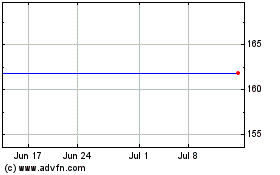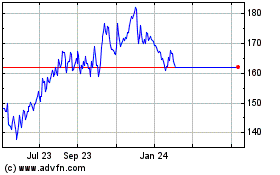Alaska Gov Proposes Shipping Natural Gas Overseas Instead Of US
October 29 2011 - 6:15PM
Dow Jones News
Alaska Gov. Sean Parnell suggested Thursday that the state's oil
and natural gas producers should ship Alaska's natural gas overseas
rather than to the U.S.
Gov. Sean Parnell said that Japan and other Asian countries may
be a "better market for Alaska gas" and that he has suggested to
TransCanada Corp. (TRP) and the state's large oil producers that
they focus on building a natural gas export terminal, rather than a
long-distance pipeline to the contiguous U.S.
"If market demand for gas has truly shifted away from the Lower
48 [states] to Pacific Rim markets, then the state of Alaska must
also be willing to move with that, and we are," Parnell said,
speaking at an event in Anchorage held by the Alaska Oil and Gas
Association that was webcast.
In addition to TransCanada, Parnell said he has spoken about
building a natural gas export terminal to representatives of Exxon
Mobil Corp. (XOM), BP PLC (BP.LN, BP) and ConocoPhillips (COP).
Parnell's comments come as U.S. and Canadian natural gas
companies reposition themselves to export gas from North America to
fast-growing markets in Asia and Europe, rather than import gas, as
U.S. gas prices have plunged due to ample supply and slow-growing
U.S. demand.
In one of the first North American gas export deals, Cheniere
Energy Inc. (LNG) signed an $8 billion agreement Wednesday with
U.K.-based BG Group PLC (BG.LN) to sell liquefied natural gas from
a facility in Louisiana. In May, Cheniere obtained a key federal
approval it needs to expand the Louisiana terminal, currently used
for importing gas, to include a facility that could export up to 2
billion cubic feet of gas a day.
Parnell said the current boom in natural gas production from
shale-rock formations in the U.S. and Japan's shift away from
nuclear power, toward gas-fired electricity generation, following
the March earthquake and tsunami that triggered a nuclear crisis
there, as major factors that have shifted the natural gas market
from the U.S. overseas.
TransCanada and Exxon have proposed building a $41 billion,
1,700-mile pipeline from Prudhoe Bay on Alaska's North Slope to
Alberta, Canada, that would connect with TransCanada's existing
pipeline system that carries gas into the U.S. The pipeline would
ship up to 4.5 billion cubic feet a day of gas and could be
expanded to carry 5.9 bcf a day.
TransCanada declined to comment specifically on Parnell's
proposal to switch the pipeline project to an export terminal, but
the company said it was having "regular conversations" with the
state.
"TransCanada is continuing its efforts to advance the Alaska
pipeline project to successfully transport North Slope gas to
market," the company said in a statement.
While the pipeline has received most of the attention, the
companies also have proposed an alternative plan to build an
800-mile pipeline to ship gas from the North Slope to southern
Alaska, where it would be liquefied for transport to Asia and other
foreign markets.
BP and ConocoPhillips had formed a rival joint venture, called
Denali, that had proposed building a $35 billion, 1,700-mile
pipeline from the North Slope to Alberta, but the companies
scrapped that plan last May.
TransCanada has a license and financial backing from the state
of Alaska, obtained during former Gov. Sarah Palin's
administration. The license includes a 10-year guarantee that locks
in tax rates for producers. Producers have complained about the
10-year term, saying it is too short, in part because it doesn't
match up with a pipeline commitment, which would likely be 20 years
or longer.
Denali's project didn't have state backing.
-By Cassandra Sweet, Dow Jones Newswires; 415-439-6468;
cassandra.sweet@dowjones.com
--Ed Welsch in Calgary contributed to this article
Cheniere Energy (AMEX:LNG)
Historical Stock Chart
From Mar 2024 to Apr 2024

Cheniere Energy (AMEX:LNG)
Historical Stock Chart
From Apr 2023 to Apr 2024
